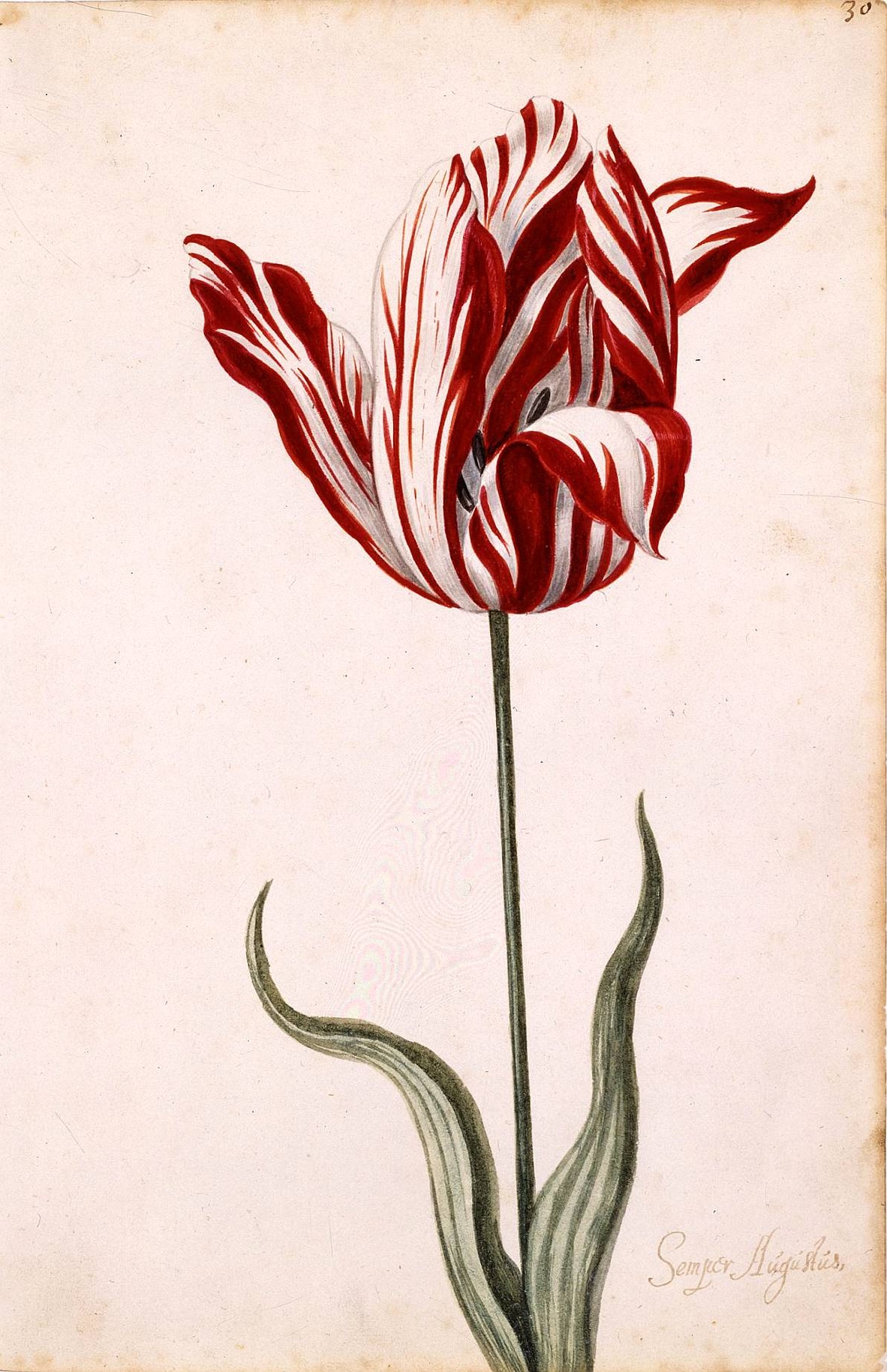 If you were a man or woman of refined tastes in Holland in 1636, you needed some blinged-out, multicolor tulips, or you were little better than a peasant with their pathetic solid-color tulips. After the tulip had arrived from the Ottoman Empire several decades earlier, it had quickly become a status symbol for the new wealth of the merchant class. As new cultivars of different colors were developed, interest centered on those which had streaks of color across their petals (it would later be discovered that this is caused by infection of the bulb by a virus).
If you were a man or woman of refined tastes in Holland in 1636, you needed some blinged-out, multicolor tulips, or you were little better than a peasant with their pathetic solid-color tulips. After the tulip had arrived from the Ottoman Empire several decades earlier, it had quickly become a status symbol for the new wealth of the merchant class. As new cultivars of different colors were developed, interest centered on those which had streaks of color across their petals (it would later be discovered that this is caused by infection of the bulb by a virus).As the Dutch East Indian company brought huge profits into the country, the people of Holland had more money than they knew what to do with. As a result, people started dumping more and more of it into tulip bulbs. Because bulbs take a long time to mature into flowering plants, people started trading in futures contracts, which were promises to purchase bulbs at a later date (so as to allow the market to proceed without waiting for the actual bulbs to be ready).
Once speculators got involved, things began to go a little crazy. People were paying increasingly ludicrous amounts of money for stamped pieces of paper which promised a tulip bulb come Spring. They would then turn around and sell that piece of paper to someone else later that same day. Meanwhile, growers began marketing their diseased tulips under names like Admirael van der Eijck, Viceroy or Semper Augustus (because who wouldn't trade their life savings for something with "Augustus" in the name?)
By the Winter of 1636-1637, single bulbs of disease-ridden tulips were selling for hundreds or thousands of florins. By comparison, a skilled laborer's yearly wage might be only 150 florins in total. Bulb exchanges were set up in the major Dutch cities where people could make and lose fortunes on tulip futures. Then, suddenly, in February, everyone came to their senses. Sellers couldn't find any more buyers willing to sell their first-born child for a flower, and the prices collapsed. People were left holding now-worthless bulbs that they had days before paid several years' worth of income for.
No comments:
Post a Comment